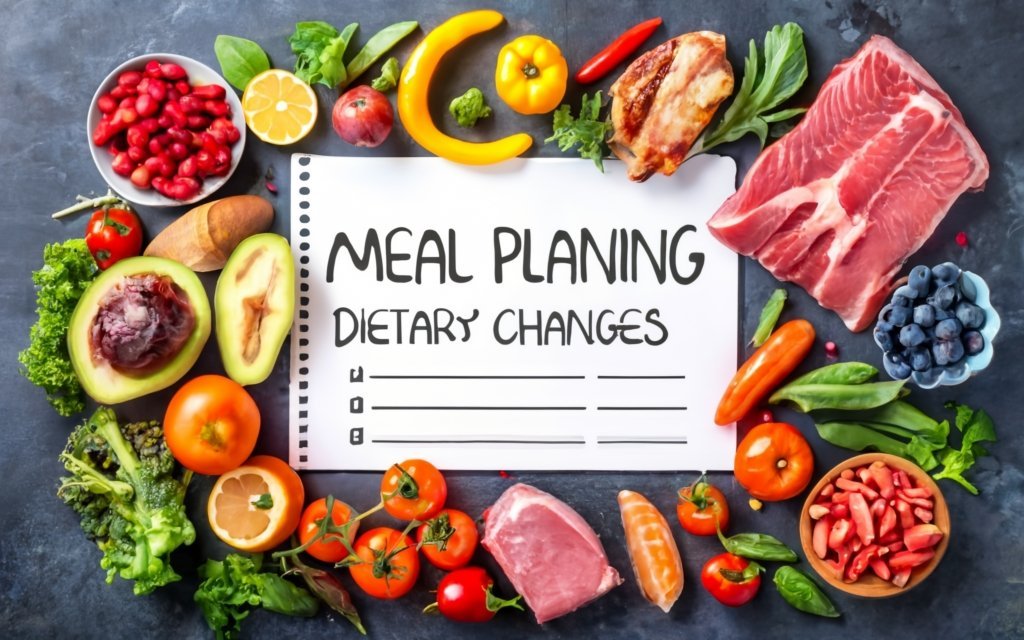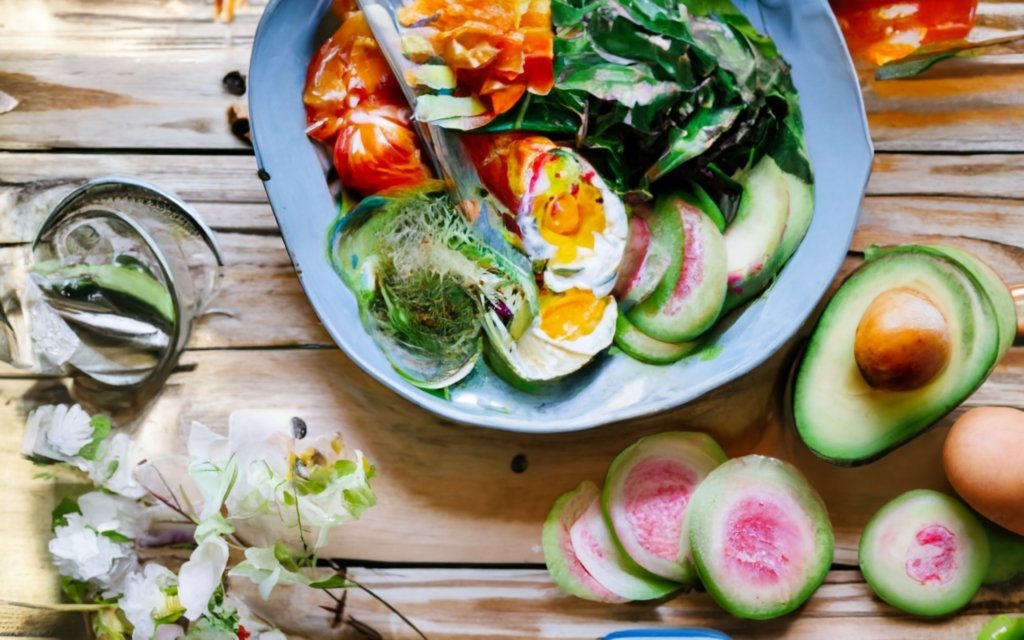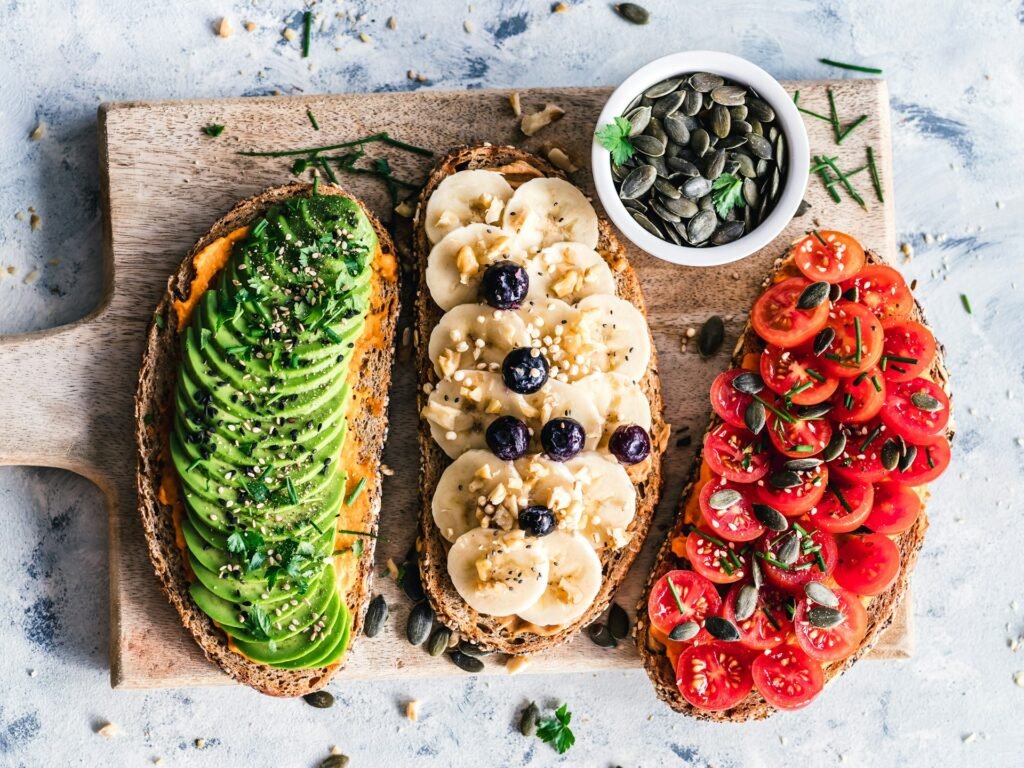Are you looking to shed some extra pounds and improve your overall well-being? Look no further! In this article, we will explore a variety of healthy food choices that can help you achieve effective weight loss. Making mindful decisions about what you eat is key, and by incorporating these nutritious options into your daily diet, you’ll be well on your way to achieving your weight loss goals. Say goodbye to fad diets and restrictive meal plans, and say hello to a sustainable and enjoyable approach to healthy eating. Let’s dive in and discover the delicious world of healthy food choices for effective weight loss.

Breakfast
Include protein
Breakfast is the most important meal of the day, and it’s crucial to start your day off right with a good balance of nutrients. When planning your breakfast, make sure to include a good source of protein. This could be eggs, Greek yogurt, cottage cheese, or even plant-based options like tofu or lentils. Protein helps to keep you feeling full and satisfied, and it gives you the energy you need to kickstart your day.
Include whole grains
In addition to protein, it’s important to include whole grains in your breakfast. Whole grains are a great source of fiber, which helps to keep you feeling full and aids in digestion. Choose whole grain options like whole wheat bread, oats, or quinoa. These grains provide long-lasting energy and essential nutrients to fuel your day.
Avoid added sugars
While it may be tempting to reach for a sugary cereal or pastry for breakfast, it’s best to avoid added sugars as much as possible. These sugary breakfast options may give you a quick burst of energy, but they will ultimately leave you feeling sluggish and hungry soon after. Instead, opt for natural sugars found in fruits. They provide a sweet and refreshing taste while also providing essential vitamins and minerals.
Lunch
Opt for lean protein
When it comes to lunch, it’s important to choose lean sources of protein. This could include chicken breast, turkey, fish, or plant-based options like tofu or beans. Lean protein helps to build and repair tissues, supports muscle growth, and keeps you feeling satisfied throughout the afternoon.
Choose high-fiber vegetables
In addition to protein, try to incorporate high-fiber vegetables into your lunch. Vegetables like broccoli, spinach, Brussels sprouts, and kale not only provide essential vitamins and minerals but also help to keep you feeling full due to their high fiber content. They add a delicious crunch and variety to your meal while contributing to your overall health and well-being.
Use healthy dressings and toppings
When it comes to dressings and toppings for your lunch, opt for healthier options. Avoid creamy dressings like ranch or Caesar, as they can be high in calories and unhealthy fats. Instead, choose vinaigrettes or simple oil and vinegar dressings. You can also experiment with herbs, spices, and citrus juices to add flavor to your meals without the added calories.

Snacks
Choose fruits and vegetables
When it’s time for a snack, reach for fruits and vegetables. These colorful and nutritious options are low in calories, high in fiber, and packed with essential vitamins and minerals. Options like carrot sticks, cucumber slices, apple slices, or berries are great choices for a healthy snack.
Opt for nuts and seeds
Another great option for snacks is nuts and seeds. These are portable, satisfying, and provide healthy fats and protein. Almonds, walnuts, pumpkin seeds, and chia seeds are excellent choices. Just be mindful of portion sizes, as they are calorie-dense.
Avoid processed snacks
While processed snacks like chips, cookies, and candy may be tempting, it’s best to avoid them as much as possible. These snacks are often high in unhealthy fats, added sugars, and empty calories. Instead, choose whole, unprocessed foods that nourish your body and support your weight loss goals.
Dinner
Prioritize lean proteins
For dinner, prioritize lean proteins to help repair and build muscles overnight. Opt for grilled chicken, salmon, turkey, or lean cuts of beef. These proteins are low in saturated fats and provide essential amino acids that help to support overall health and well-being.
Incorporate non-starchy vegetables
Non-starchy vegetables should play a prominent role in your dinner plate. These include options like broccoli, cauliflower, asparagus, bell peppers, and leafy greens. Non-starchy vegetables are low in calories and high in fiber, making them a great choice for weight loss. They add volume to your meals, keeping you satisfied without adding unnecessary calories.
Limit refined carbohydrates
When it comes to carbohydrates, choose wisely. While some carbohydrates are essential for a balanced diet, it’s important to limit refined carbohydrates like white rice, white bread, and pasta. These highly processed options are stripped of their nutrients and can cause blood sugar spikes and crashes. Instead, opt for whole grain alternatives like brown rice, quinoa, or whole wheat pasta.

Beverages
Drink plenty of water
Water is vital for overall health and plays a key role in weight loss. It helps to keep you hydrated, flushes out toxins, and supports proper digestion. Aim to drink at least 8 cups of water a day, or more if you’re physically active. Water has zero calories and can help you feel full, preventing overeating.
Opt for low-calorie options
When it comes to other beverages, opt for low-calorie options. Swap sugary sodas and juices for unsweetened tea, flavored water, or sparkling water. These options provide hydration without unnecessary added sugars or calories. Be mindful of portion sizes for beverages that do contain calories, such as milk or smoothies, to ensure you’re not consuming excessive calories.
Avoid sugary drinks
One of the biggest culprits when it comes to weight gain is sugary drinks. These can include soda, energy drinks, sweetened coffee or tea, and fruit juices. Not only do these drinks contain empty calories, but they can also cause spikes in blood sugar and lead to cravings for more sugary foods. Avoiding sugary drinks is a simple yet effective way to support your weight loss goals.
Portion Control
Use smaller plates and bowls
Portion control plays a crucial role in weight loss. One effective strategy is to use smaller plates and bowls. This simple trick can help you eat less without feeling deprived. By using smaller dishes, you’ll naturally serve yourself smaller portions, making it easier to control the number of calories you consume.
Be mindful of serving sizes
In addition to using smaller plates and bowls, it’s essential to be mindful of serving sizes. Familiarize yourself with appropriate portion sizes based on the nutritional guidelines for different food groups. Use measuring cups or a food scale to accurately measure your portions until you develop an eye for estimating serving sizes.
Listen to your body’s hunger cues
Lastly, listen to your body’s hunger cues to avoid overeating. Pay attention to your body’s signals of hunger and fullness. Eat slowly and mindfully, savoring each bite. Stop eating when you feel satisfied, not overly full. Your body knows best when it comes to determining how much food it needs, so trust your instincts.
Meal Planning
Prepare meals in advance
Meal planning is a fantastic way to stay on track with your healthy eating goals. Take some time each week to plan and prepare your meals in advance. This can include batch-cooking for the week, pre-cutting vegetables, or portioning out snacks. By having healthy meals ready to go, you’ll be less likely to make impulsive choices or reach for unhealthy options.
Include a variety of food groups
When meal planning, make sure to include a variety of food groups. This ensures that you’re getting a wide range of essential nutrients necessary for optimal health and weight loss. Aim to include lean proteins, whole grains, fruits, vegetables, and healthy fats in each meal.
Monitor portion sizes
To maintain portion control during meal planning, consider using containers or meal prep containers to portion out your meals in advance. This not only helps with portion control but also makes it easier to grab a healthy meal when you’re on the go or at work. By monitoring portion sizes, you’ll be able to manage your calorie intake and support your weight loss efforts.
Cooking Methods
Choose healthier cooking techniques
The way you cook your food can greatly impact its nutritional value and calorie content. When possible, choose healthier cooking techniques like grilling, steaming, or baking instead of frying. These methods require less oil and butter and help to preserve the natural flavors and nutrients in your food.
Use less oil and butter
Cutting back on the amount of oil and butter used in cooking can significantly reduce the calorie content of your meals. Instead of using large amounts of oil or butter, try using cooking spray or non-stick pans. You can also experiment with herbs, spices, and citrus juices to add flavor to your dishes without relying on excessive amounts of fats.
Grill, steam, or bake instead of frying
Grilling, steaming, or baking your food is a healthier alternative to frying. These cooking methods require little to no added fats and help to retain the natural flavors and nutrients in your food. Grilled chicken, steamed vegetables, and baked fish are delicious options that are lower in calories and fat compared to their fried counterparts.
Eating Out
Research restaurant menus beforehand
When eating out, it’s important to plan ahead and research restaurant menus beforehand. Look for options that align with your healthy eating goals, such as grilled or baked protein options, salads, or vegetable-based dishes. By having a plan in place, you’ll be less likely to make impulsive choices that may not align with your weight loss goals.
Choose grilled or baked options
When ordering at a restaurant, opt for grilled or baked protein options instead of fried or breaded ones. Grilled chicken, fish, or lean cuts of beef are healthier alternatives that are lower in calories and unhealthy fats. Ask for sauces and dressings on the side to control the amount you use, or opt for healthier dressings like oil and vinegar.
Ask for dressings and sauces on the side
Another way to stay in control of your calorie intake when eating out is to ask for dressings and sauces on the side. This allows you to add them in moderation or forgo them altogether if they’re high in calories or unhealthy fats. By having control over the amount of dressings and sauces you consume, you can ensure that your meal stays in line with your weight loss goals.
Staying Consistent
Make gradual changes
When embarking on a weight loss journey, it’s important to make gradual changes to your eating habits. Small, sustainable changes are more likely to stick in the long run compared to drastic and restrictive diets. Start by incorporating one or two healthy habits at a time, such as adding more vegetables to your meals or swapping sugary drinks for water. Over time, these changes will add up and become part of your everyday routine.
Set realistic goals
Setting realistic goals is essential for successful weight loss. Instead of aiming for rapid, unrealistic results, set achievable goals that can be sustained in the long term. Focus on making healthy choices and developing a positive relationship with food instead of solely focusing on the number on the scale. By setting realistic goals, you’ll be more motivated to stay consistent and make positive changes for your overall health and well-being.
Find accountability and support
One of the keys to staying consistent with healthy food choices is finding accountability and support. Surround yourself with like-minded individuals who share similar goals. This could be friends, family, or joining a support group or online community focused on healthy living. Having someone or a group to share your successes, challenges, and experiences with can greatly increase your chances of sticking to your healthy eating plan.
In conclusion, making healthy food choices is vital for effective weight loss. By incorporating protein and whole grains into your breakfast, opting for lean protein and high-fiber vegetables at lunch, choosing fruits and vegetables as snacks, prioritizing lean proteins and non-starchy vegetables for dinner, and hydrating with water and low-calorie options, you can support your weight loss goals. Portion control, meal planning, using healthier cooking methods, making mindful choices when eating out, and staying consistent through gradual changes, realistic goals, and finding accountability and support will further enhance your journey toward effective weight loss. Remember, your health is in your hands, and making nutritious choices is a step in the right direction.



